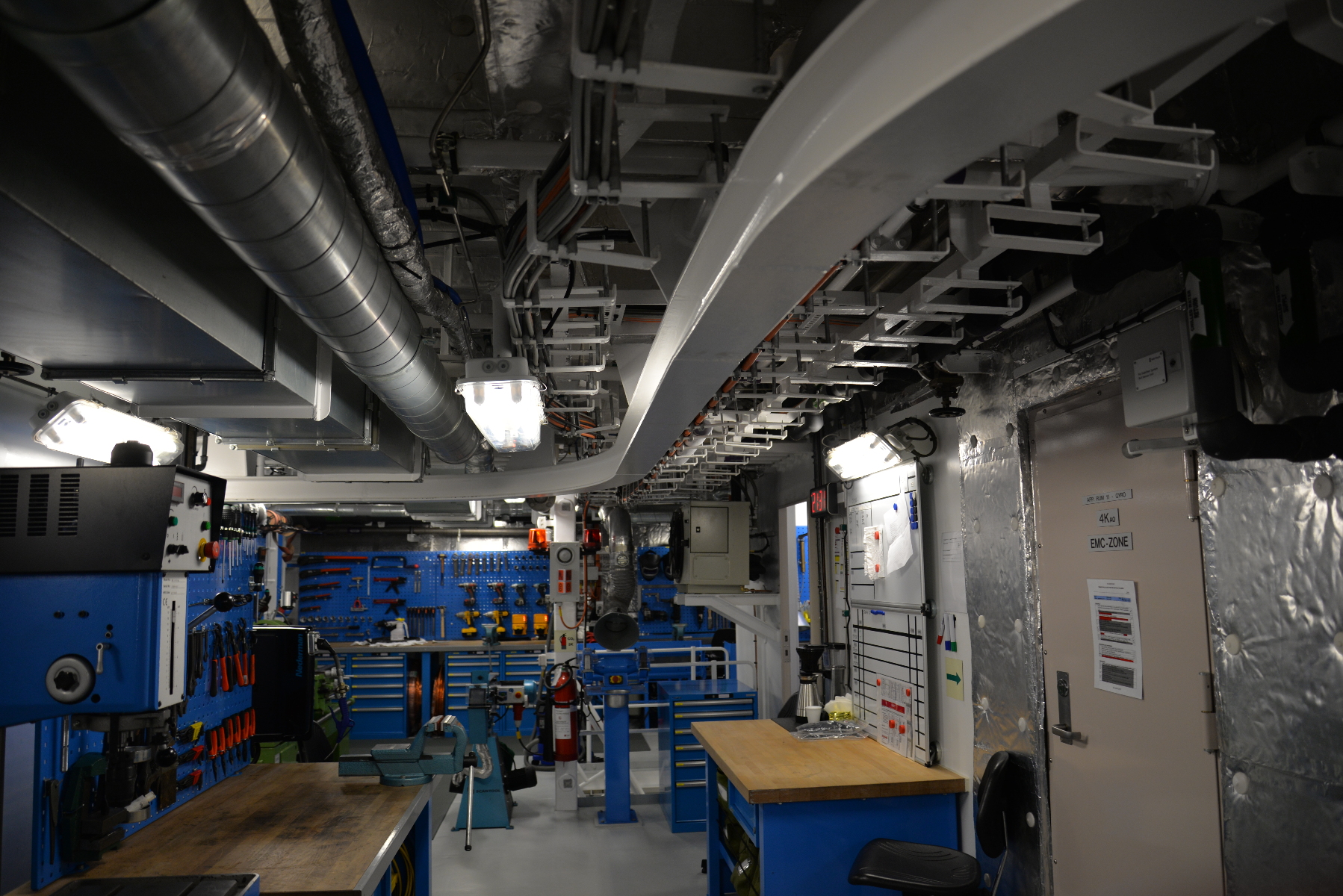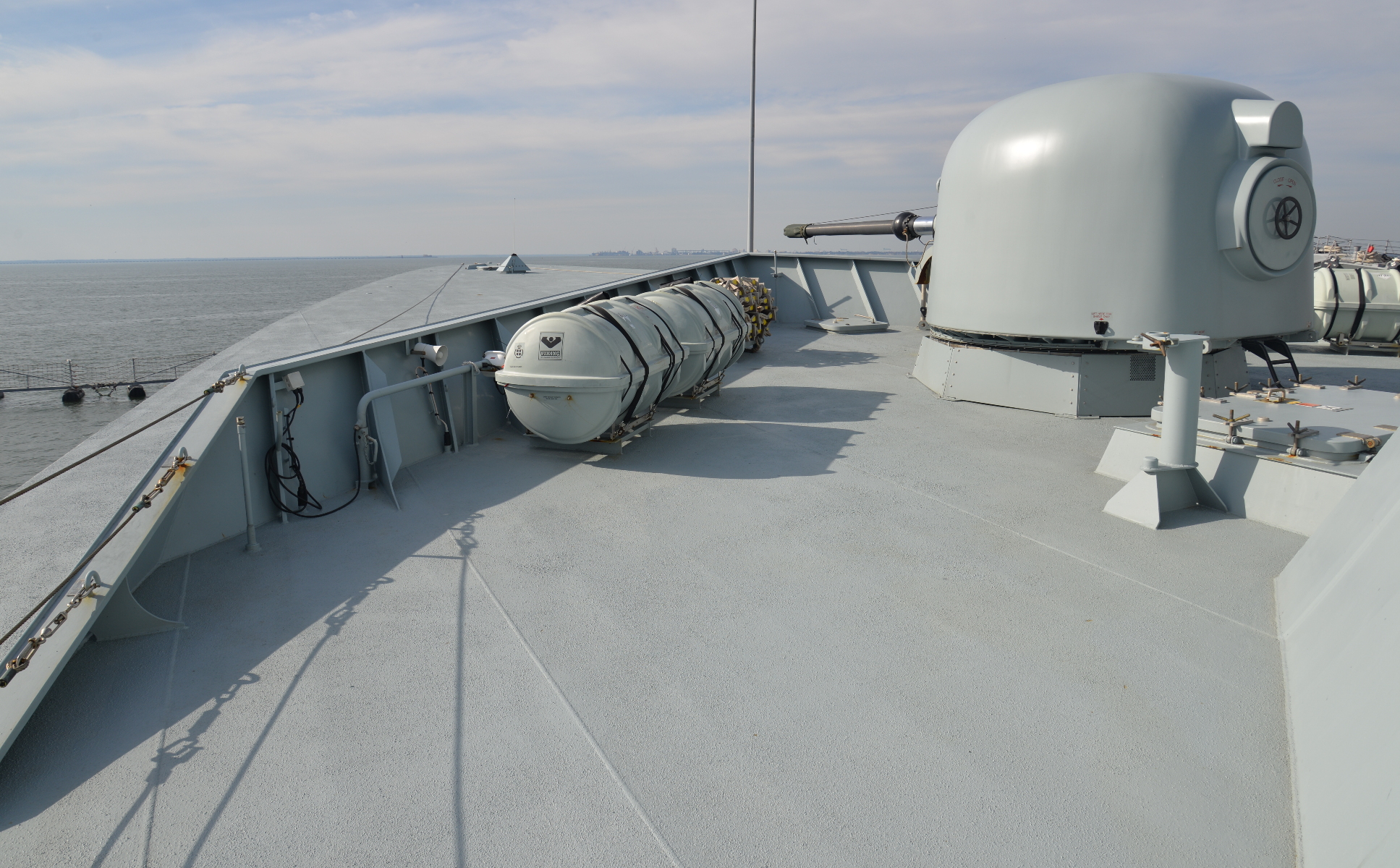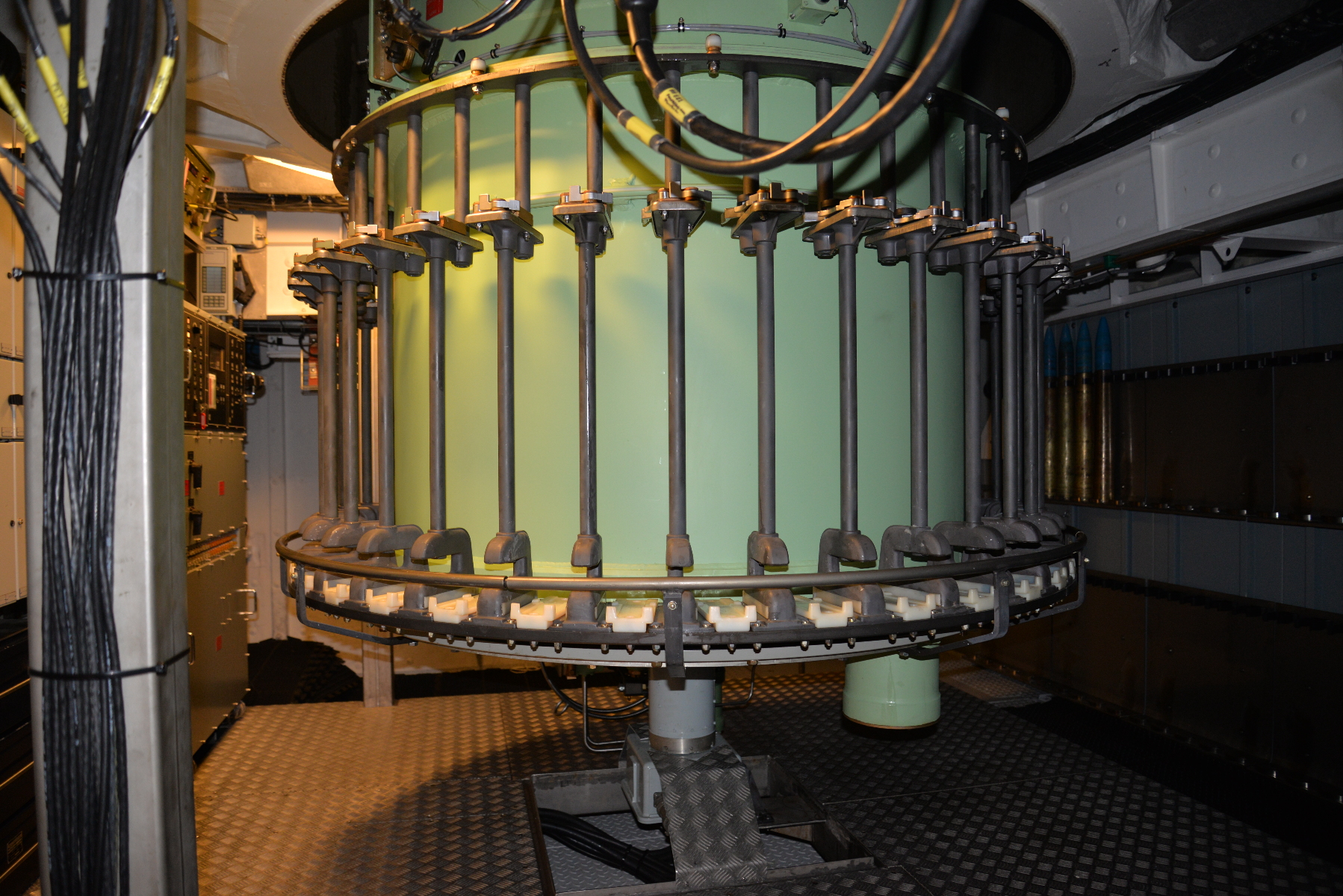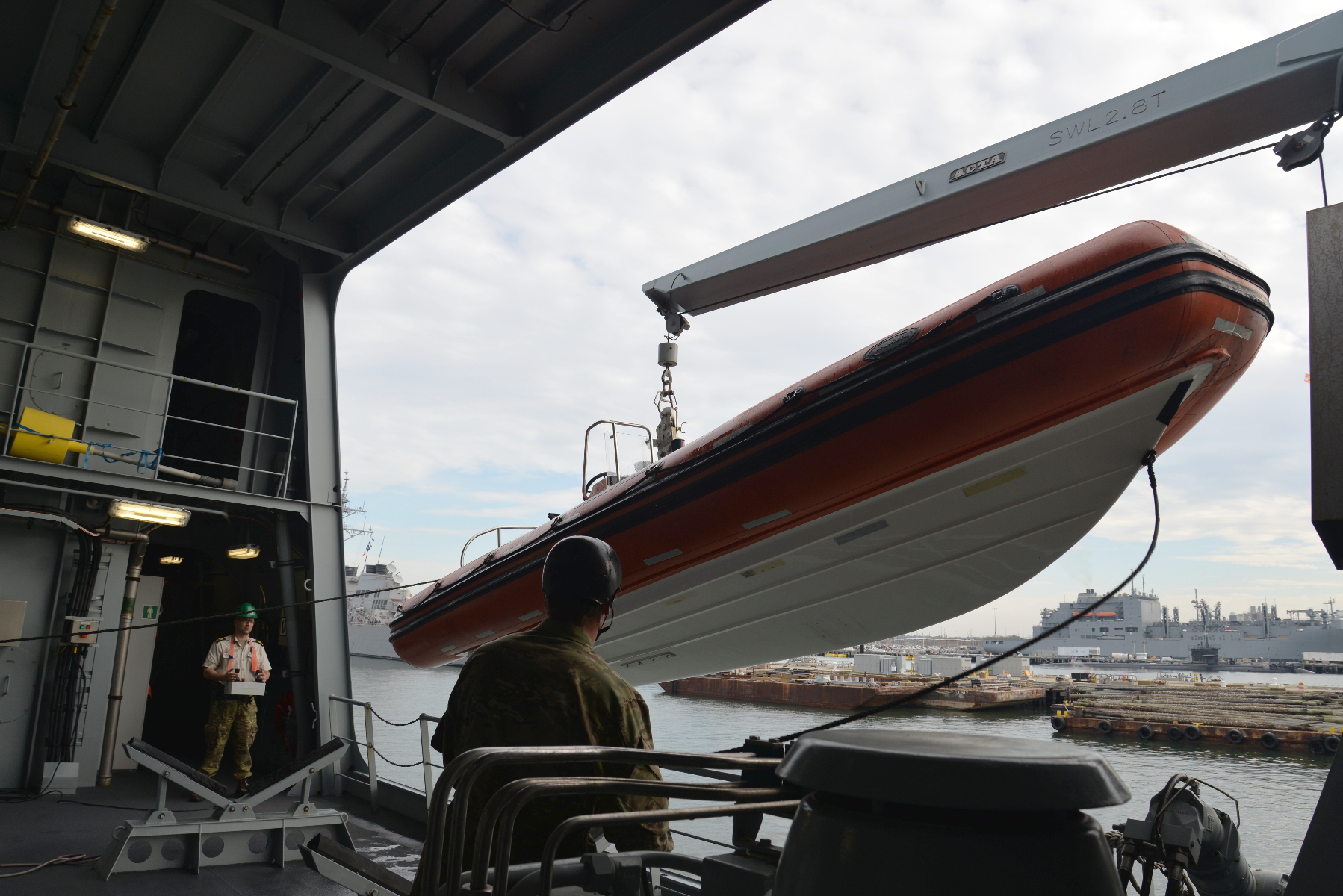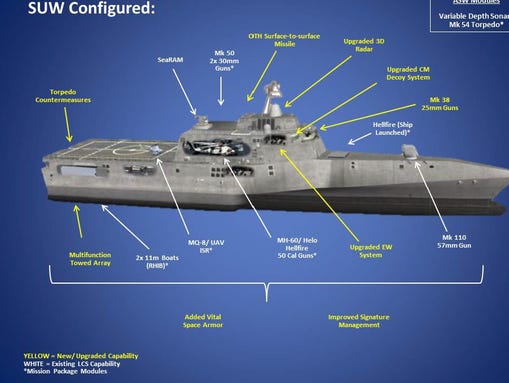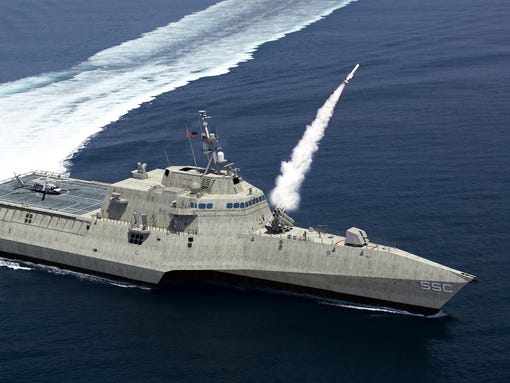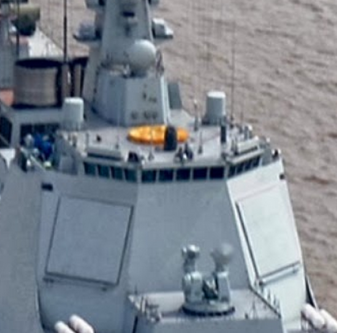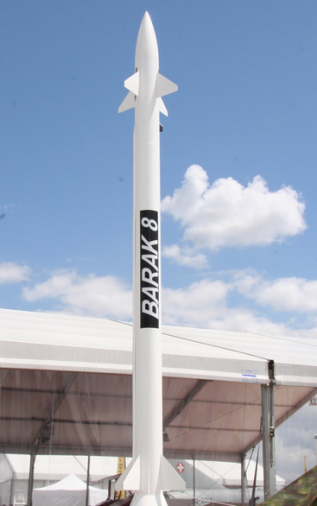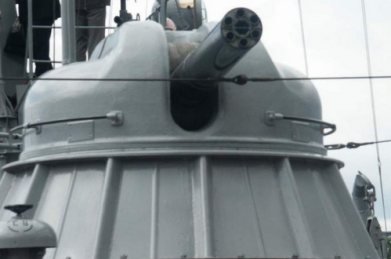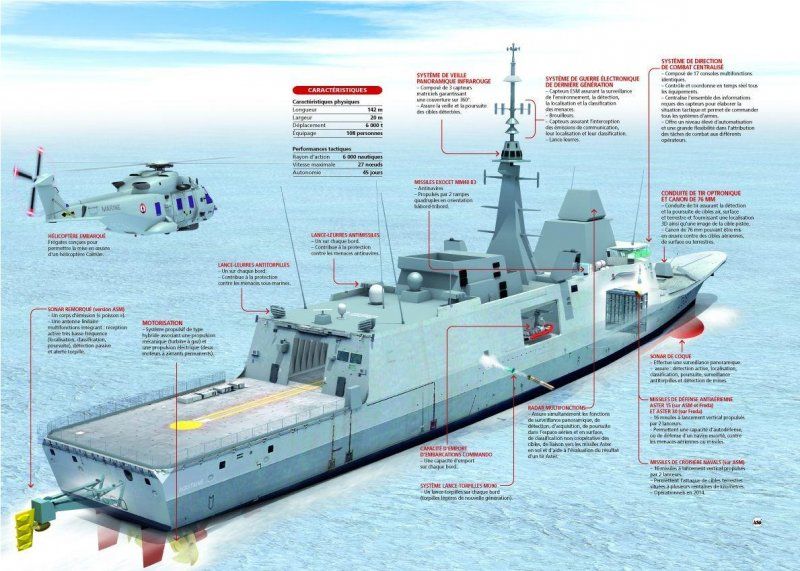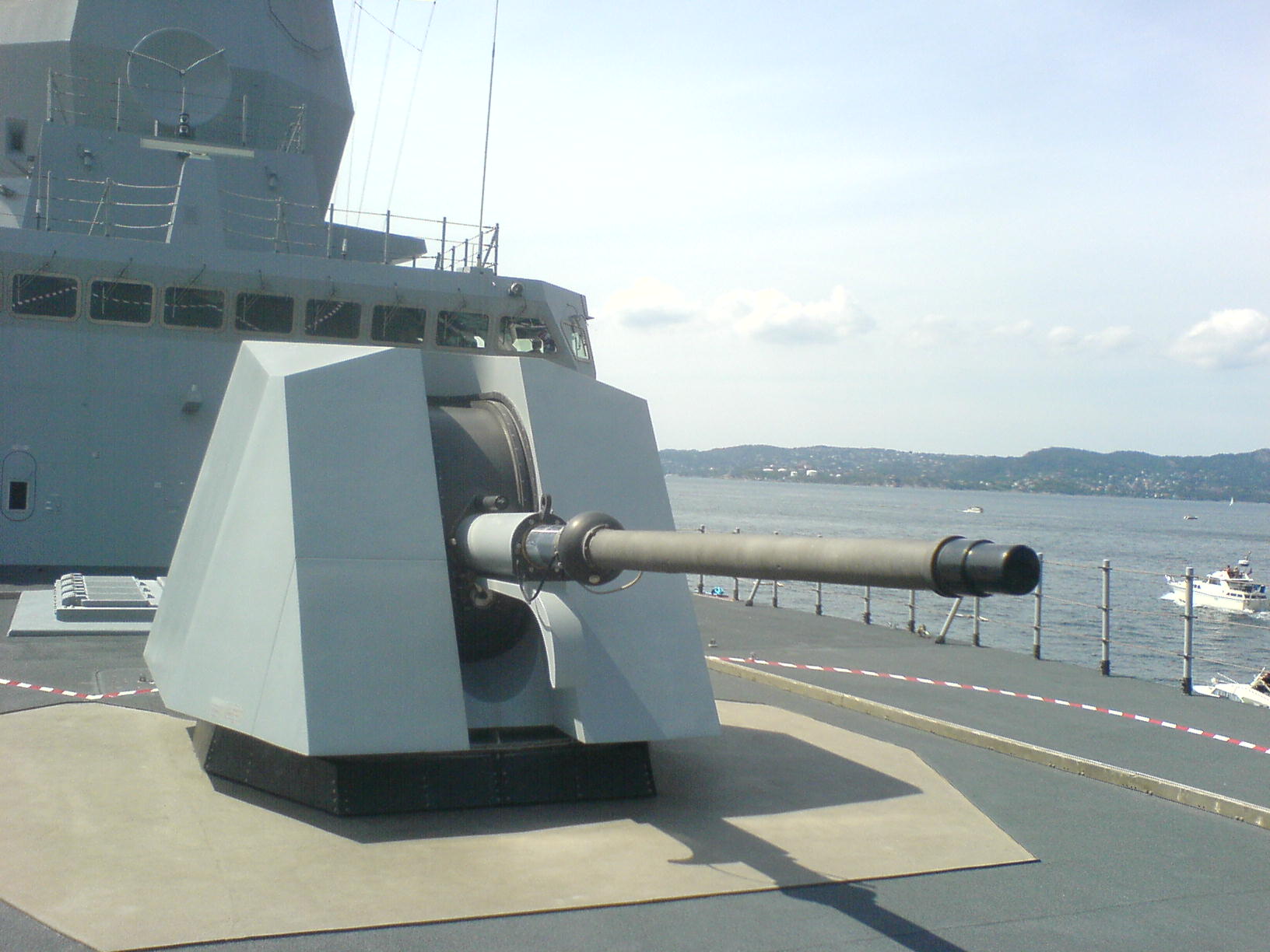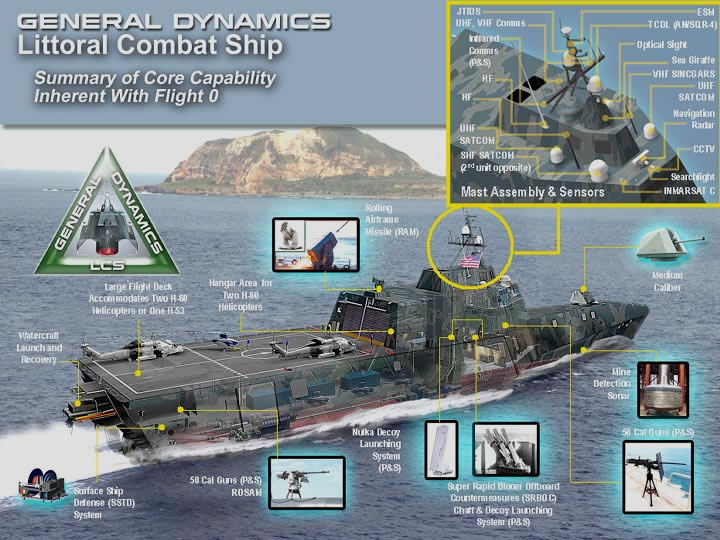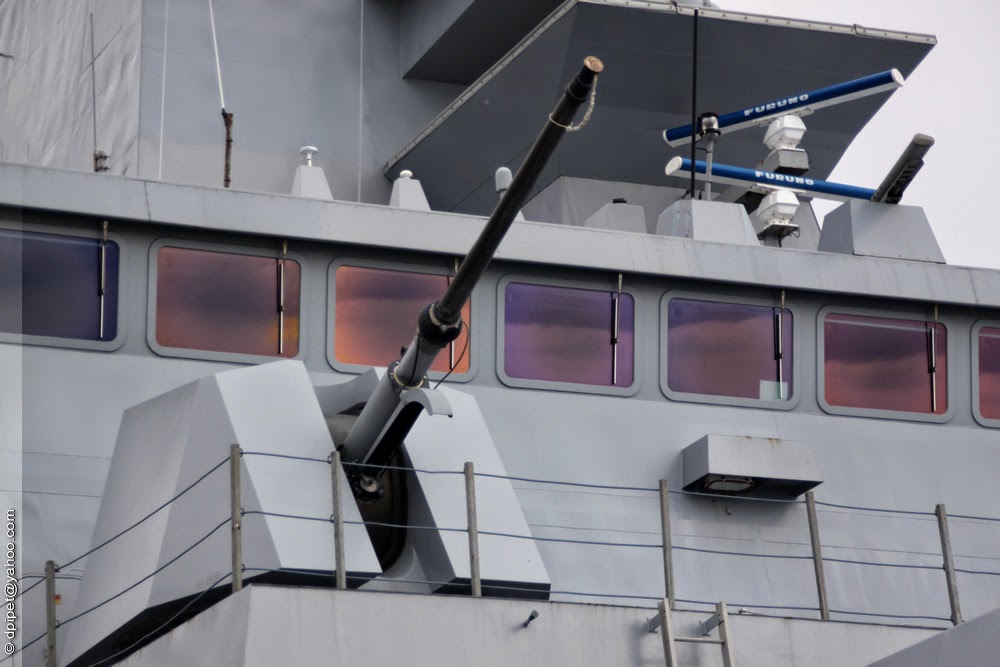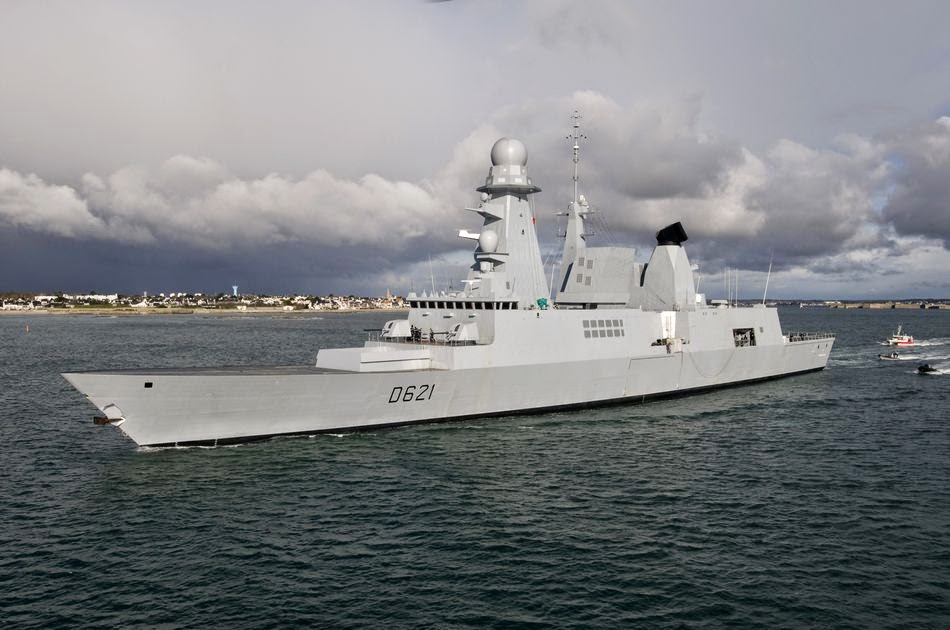Sleek, modern and built on a budget – Denmark’s latest frigate
Christopher P. Cavas / November 21, 2014

Danes have a well-deserved reputation for designing and building efficient, effective ships on tight budgets. In line with the government’s desire to provide meaningful contributions to coalition and expeditionary forces, their newest ships have been designed to deploy well beyond Europe.
In recent years the Danish Navy has commissioned five impressive, modern warships fitted with sophisticated command and control and sensor suites and — when they’re eventually fully fitted out — powerful armaments. First came the combat support ships Absalon and Esbern Snare. Since their commissioning in 2004 and 2005, respectively, the two have deployed a number of times, in particular serving as flagships for anti-piracy forces patrolling off Somalia.
The design of the three Iver Huitfeldt-class frigates was based on the Absalons. Commissioned between 2012 and 2014, they represent a considerable achievement, built at a cost of $325 million apiece – virtually a bargain-basement price for a modern frigate.
The design team assembled by Odense Shipyard that was responsible for the ships continues as an entity, despite the yard’s closure following delivery of the last frigate.
We had an up-close chance to see the newest ship, Nils Juel, during the ship’s visit to the US in the fall of 2014. Turned over to the Navy and commissioned only in August, the frigate is still quite new, without many of the fittings and armaments that the Danes hope to field. Yet she crossed the Atlantic to take part in Exercise Bold Alligator along the eastern seaboard with US and other foreign navies. We caught her just after the exercise concluded, riding from Norfolk to Baltimore. Here’s a look at this impressive ship.
All photos by Christopher P. Cavas

Nils Juel is the third of three Iver Huitfeld-class air defense frigates. Iver Huitfeld was commissioned in February 2012, Peter Willemoes in January 2013 and Nils Juel in August 2014.

The forward superstructure is dominated by the Thales Active Phased Array Multifunction Radar (APAR), able to simultaneously support anti-air and anti-surface engagements.

The Danish frigates are big ships – 455 feet long overall, 65 feet in beam, with a draft of nearly 21 feet. Major hull components were built in Lithuania and Estonia and assembled in Denmark.

The ship’s clean lines are functional, reducing reflective surfaces to lower the ship’s radar signature.

A small Saab Ceros 200 fire control radar sits atop the pilot house among white-painted communications domes. The super firing guns are an unusual feature.

Hidden amidships are the ship’s missile batteries, flanked aft by enclosures to handle small boats. The aft superstructure is topped by the large Thales Smart-L three-dimensional radar.

The Smart-L radar sits atop a single helicopter hangar, flanked by the ship’s twin uptakes. .

Closer view of the Smart-L radar. A Rheinmetall Oerlikon 35mm Millenium close-in weapon system is to be installed atop the hangar. The Swiss-manufactured weapon is in service with the Danish and Venezuelan navies.

The Niels Juel’s Millenium gun was removed for further work prior to the fall 2014 deployment and a dummy mount installed in its place. This is not just a cosmetic move — the shape of the gun affects wind currents and eddies hitting the flight deck, which is certified based on a ship’s individual characteristics. To maintain the flight deck’s certified air flow an identical shape was necessary as a temporary replacement.

The ship’s wide beam is evident in this stern view. The similar Absalon-class combat support ships are fitted with a stern ramp to a mission bay in this area, but the frigates don’t carry that feature.

The APAR and Smart-L radars are part of a combat suite that is nearly identical to Dutch De Zeven Provincien-class and German Sachsen-class frigates.

The spacious bridge spans the full width of the ship.

The helmsman sits at a raised console in the center of the pilothouse, steering with a joystick.

A view out the ship’s bridge windows at the foredeck, where safety gear is required. The two sailors here are rigging festive lighting for the ship’s visit to Baltimore.

Detail of one of the navigational displays on either side of the pilothouse.

Ship’s captain Commander Senior Grade Lars Holbæk addresses the crew over the ship’s announcement system just after leaving Norfolk, while Lars Schwetje, multimedia director for Gannett Government Media, shoots video.
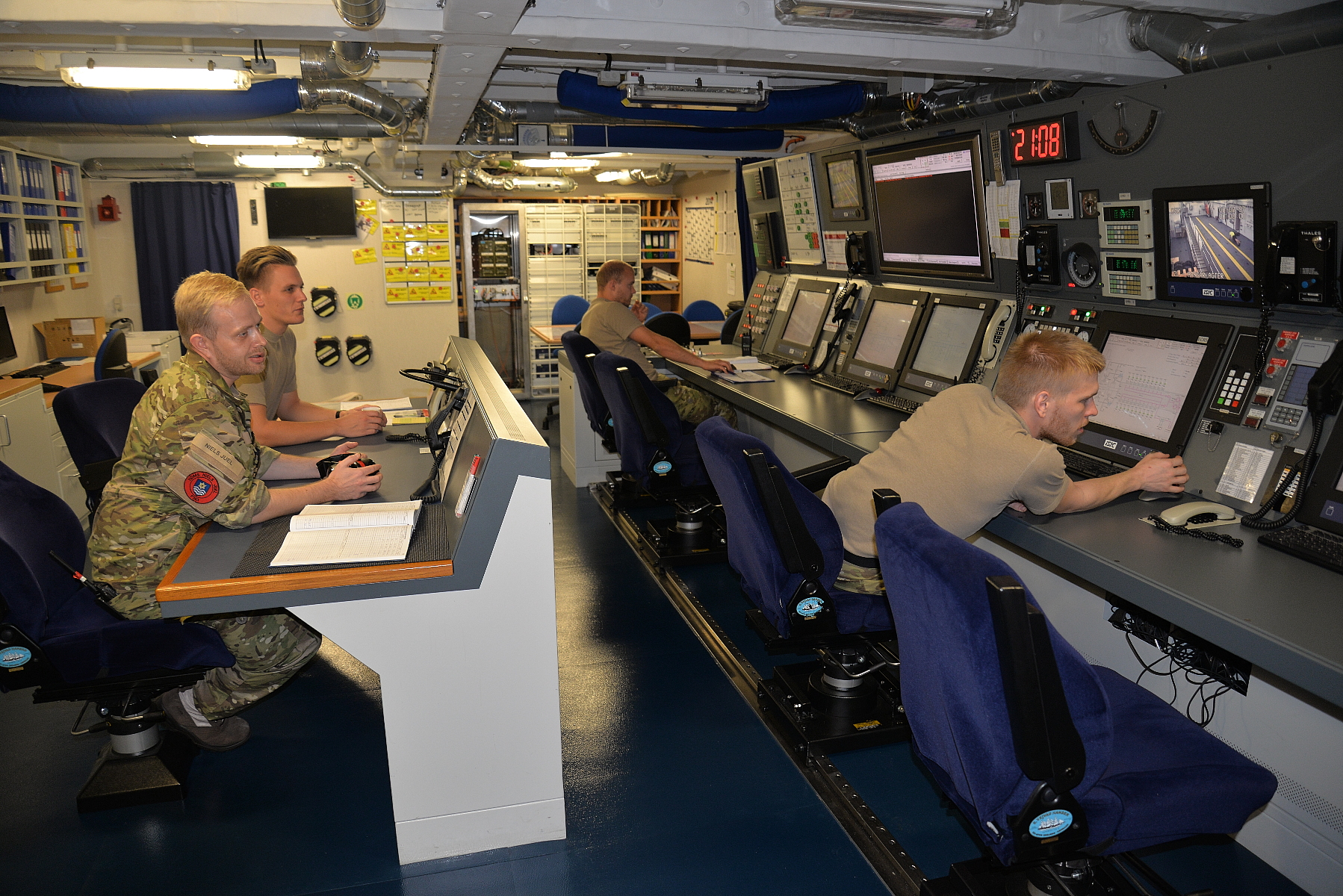
Electro Officer Christian Jens, in the foreground at left, oversees operations in the ship’s Engineering Control center. With a crew of only 117, the Nils Juel relies on a high degree of automation. Fifty cameras monitor key spaces around the ship — at upper right, one of them shows a view of the helicopter hangar.
Christopher P. Cavas / November 21, 2014

Danes have a well-deserved reputation for designing and building efficient, effective ships on tight budgets. In line with the government’s desire to provide meaningful contributions to coalition and expeditionary forces, their newest ships have been designed to deploy well beyond Europe.
In recent years the Danish Navy has commissioned five impressive, modern warships fitted with sophisticated command and control and sensor suites and — when they’re eventually fully fitted out — powerful armaments. First came the combat support ships Absalon and Esbern Snare. Since their commissioning in 2004 and 2005, respectively, the two have deployed a number of times, in particular serving as flagships for anti-piracy forces patrolling off Somalia.
The design of the three Iver Huitfeldt-class frigates was based on the Absalons. Commissioned between 2012 and 2014, they represent a considerable achievement, built at a cost of $325 million apiece – virtually a bargain-basement price for a modern frigate.
The design team assembled by Odense Shipyard that was responsible for the ships continues as an entity, despite the yard’s closure following delivery of the last frigate.
We had an up-close chance to see the newest ship, Nils Juel, during the ship’s visit to the US in the fall of 2014. Turned over to the Navy and commissioned only in August, the frigate is still quite new, without many of the fittings and armaments that the Danes hope to field. Yet she crossed the Atlantic to take part in Exercise Bold Alligator along the eastern seaboard with US and other foreign navies. We caught her just after the exercise concluded, riding from Norfolk to Baltimore. Here’s a look at this impressive ship.
All photos by Christopher P. Cavas

Nils Juel is the third of three Iver Huitfeld-class air defense frigates. Iver Huitfeld was commissioned in February 2012, Peter Willemoes in January 2013 and Nils Juel in August 2014.

The forward superstructure is dominated by the Thales Active Phased Array Multifunction Radar (APAR), able to simultaneously support anti-air and anti-surface engagements.

The Danish frigates are big ships – 455 feet long overall, 65 feet in beam, with a draft of nearly 21 feet. Major hull components were built in Lithuania and Estonia and assembled in Denmark.

The ship’s clean lines are functional, reducing reflective surfaces to lower the ship’s radar signature.

A small Saab Ceros 200 fire control radar sits atop the pilot house among white-painted communications domes. The super firing guns are an unusual feature.

Hidden amidships are the ship’s missile batteries, flanked aft by enclosures to handle small boats. The aft superstructure is topped by the large Thales Smart-L three-dimensional radar.

The Smart-L radar sits atop a single helicopter hangar, flanked by the ship’s twin uptakes. .

Closer view of the Smart-L radar. A Rheinmetall Oerlikon 35mm Millenium close-in weapon system is to be installed atop the hangar. The Swiss-manufactured weapon is in service with the Danish and Venezuelan navies.

The Niels Juel’s Millenium gun was removed for further work prior to the fall 2014 deployment and a dummy mount installed in its place. This is not just a cosmetic move — the shape of the gun affects wind currents and eddies hitting the flight deck, which is certified based on a ship’s individual characteristics. To maintain the flight deck’s certified air flow an identical shape was necessary as a temporary replacement.

The ship’s wide beam is evident in this stern view. The similar Absalon-class combat support ships are fitted with a stern ramp to a mission bay in this area, but the frigates don’t carry that feature.

The APAR and Smart-L radars are part of a combat suite that is nearly identical to Dutch De Zeven Provincien-class and German Sachsen-class frigates.

The spacious bridge spans the full width of the ship.

The helmsman sits at a raised console in the center of the pilothouse, steering with a joystick.

A view out the ship’s bridge windows at the foredeck, where safety gear is required. The two sailors here are rigging festive lighting for the ship’s visit to Baltimore.

Detail of one of the navigational displays on either side of the pilothouse.

Ship’s captain Commander Senior Grade Lars Holbæk addresses the crew over the ship’s announcement system just after leaving Norfolk, while Lars Schwetje, multimedia director for Gannett Government Media, shoots video.

Electro Officer Christian Jens, in the foreground at left, oversees operations in the ship’s Engineering Control center. With a crew of only 117, the Nils Juel relies on a high degree of automation. Fifty cameras monitor key spaces around the ship — at upper right, one of them shows a view of the helicopter hangar.



